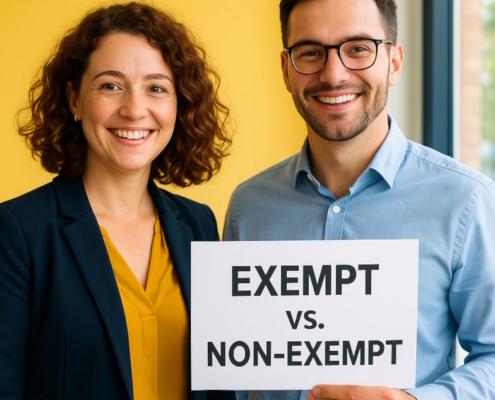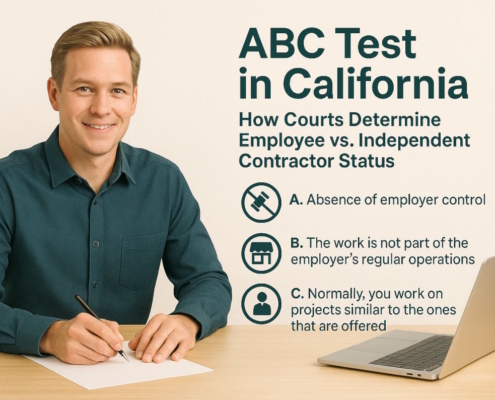Some people enjoy working overtime because that means more money. However, many do not know when or how much he or she is entitled to for working over his or her normal shift. A normal work week is considered 40 hours a week, working eight hours a day. A 40-hour work week is considered full-time making eight hours a day a normal work day. Anytime worked after these eight hours is considered overtime. However, overtime is not allotted to all employees. This article explains when overtime is given and to whom.
Exempt v. non-exempt employees
In order to determine whether an employee is entitled to overtime, it must first be decided what category the employee falls into: exempt or non-exempt. Non-exempt employees usually receive more benefits than that of an exempt employee including overtime.
In California, it is usually agreed employees have the right to:
- overtime when working over 40 hours;
- right to be paid minimum wage (currently not less than $10); and
- right to certain breaks including lunch/dinner.
However, this usually applies to non-exempt employees. There are certain times when an employee is not entitled to these benefits and will be labeled as exempt employees. In order to be exempt, the employee must meet certain requirements. These include:
- Making at least twice California’s minimum wage
- Duty to use his or her own judgment in the workforce
- Employee works in administrative or executive decision making
In order for an employee to be exempt from minimum wage, he or she must be making twice the California’s minimum wage. For example, if your employer has 30 employees and the year is 2019, you must be making at least $24/hour to be qualified as an exempt employee. If you are making less, you will be considered a non-exempt employee.
Making his or her own judgment
If the minimum wage requirement is met, the next factor to analyze is whether the employee makes his own judgment while working; specially, does this employee assert his or her control or does the employer inherently have the control?
Control arises when an employee can usually set his or her own time, use his or her own equipment, and finish the task at hand as he or she sees fit. California has several tests it utilizes and follows in order to determine whether the employee asserts his or her own control.
Manner and means test:
The first is the manner and means test. The court will not look at whether an employee is labeled an employee or an independent contractor (exempt employee). Instead, the court looks at:
- whether the worker is engaged in a distinct occupation or business,
- whether, considering the kind of occupation and locality, the work is usually done under the principal’s direction or by a specialist without supervision,
- the skill required,
- whether the principal or worker supplies the instrumentalities, tools, and place of work,
- the length of time for which the services are to be performed,
- the method of payment, whether by time or by job,
- whether the work is part of the principal’s regular business, and
- whether the parties believe they are creating an employer-employee relationship.
If an employee meets most of the above factors, he or she will be considered to make his or her own judgment.
California’s anti-discrimination laws/test:
In order to determine whether an employee is exempt under overtime wage laws in California, the court may also look at the anti-discrimination test. Here, the court will analyze whether the employee:
- Has the right to control the performance of the contract for services and discretion as to the manner of performance.
- Engages in an independently established business.
- Has control over the time and place the work is performed, supplies the tools and instruments used in the work, and performs work that requires a particular skill not ordinarily used in the course of the employer’s work.
If an employee meets these requirements, they will be deemed exempt and not be covered by minimum wage laws.
Economic realities test
this test is usually used in federal courts versus state courts to determine whether an employee is exempt or non-exempt. Here, the court looks at the totality of the circumstances of the relationship between the employer and employee.
The court will analyze a few factors:
- Employer had authority to hire and fire the employee,
- Employer supervised and controlled scheduling and conditions of employment
- Employer determined rate and method of payment.
If the court finds the employer did in fact have more control than the employee in the above factors, the employee will be deemed non-exempt and be entitled to the minimum wage laws in California.
End result from one of the above tests
If the court finds the employee is non-exempt, the employer can treat his or her employee as exempt and the employee, unfortunately, cannot benefit from overtime or breaks. Although the employer may be paying the employee double minimum wage, the employer has an arguable more productive staff because breaks are not entitled and an employee cannot ask for overtime.































